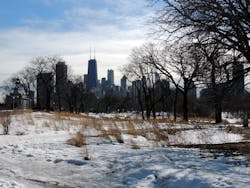Building Materials
Challenges in arctic, subarctic regions subject of new ASHRAE guide
By Peter Fabris, Contributing Editor
Oct. 16, 2015
Buildings in arctic and subarctic climates face cold, remoteness, limited utilities, permafrost, and extreme temperature shifts.
Meeting these challenges while keeping occupants comfortable and minimizing environmental impact creates difficulties for designers. “Cold-Climate Buildings Design Guide” from ASHRAE provides information on the issues commonly faced in these climates.
Tips for designing, operating and maintaining buildings and systems in cold climates from the guide include:
- The colder the climate, the more important it is for critical equipment to be sheltered – you can’t expect service personnel to properly repair HVAC equipment in a winter blizzard.
- In extreme climates, windblown snow takes on a consistency similar to sand and requires special design techniques to keep it from getting into HVAC intakes.
- A building envelope must address all modes of heat loss to be truly efficient; ignoring any mode of loss may lead to excessive thermal transfer.
- Design out cold bridges in both building fabric and engineering penetrations.
- Avoid or minimize any external service pipe runs.
- Provide safe access to roof mechanical plants in all weathers – frozen roof surfaces can be a hazard.
- Locate air inlets and exhausts in locations that avoid snow drift and blockage.
Sign up for Building Design+Construction Newsletters
